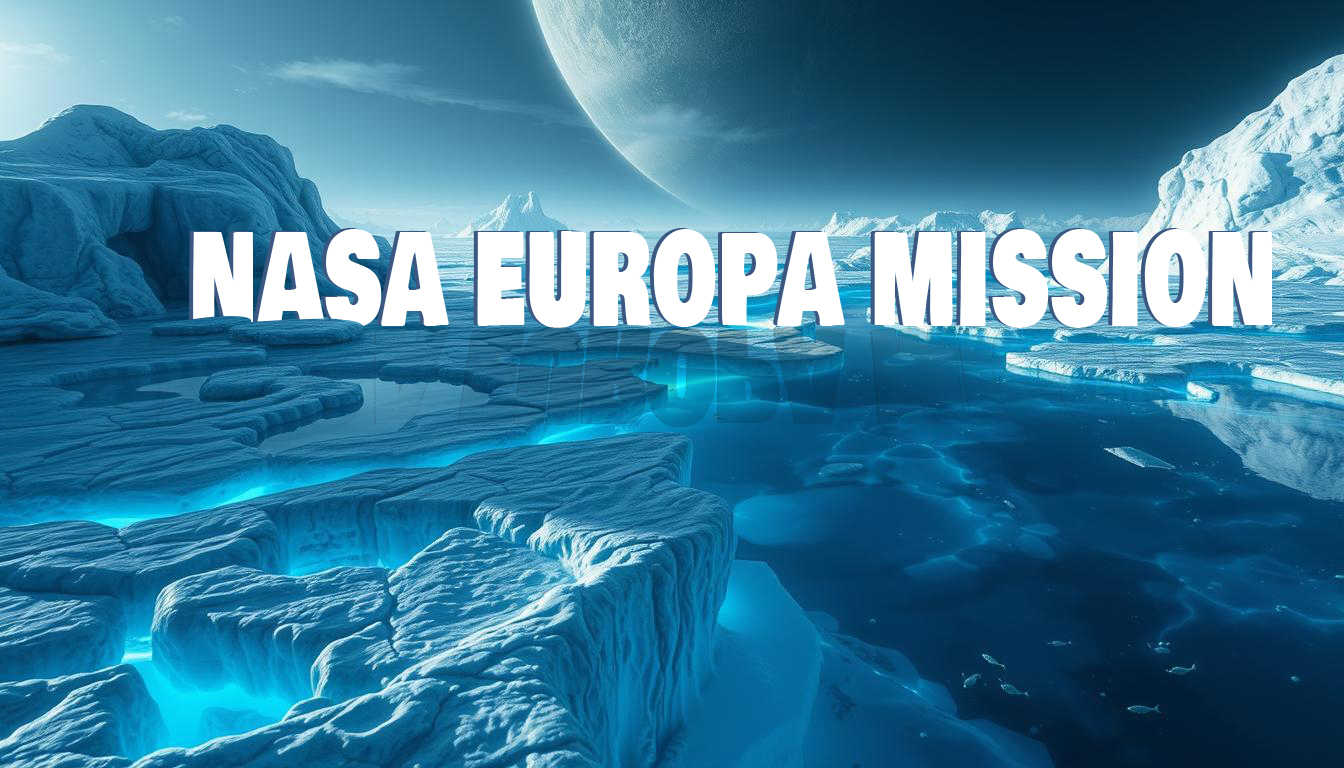NASA’s Europa Mission: Quest for Alien Oceans
What if the secret to life beyond Earth is hidden beneath the icy surface of a distant moon? NASA’s Europa Mission is on a quest to uncover the mysteries of Europa, a moon of Jupiter. It’s exploring the oceans that might be hidden beneath its icy crust. This mission is not just about finding life; it’s also about understanding the universe better.
Scientists are using new technologies and working together from different fields. They’re on the verge of making big discoveries about life in alien oceans. This could change how we see life in the universe.

An unexpected error occurred while regenerating the image. Please try again.
Key Takeaways
- NASA’s Europa Mission aims to explore the potential for life in hidden oceans beneath Europa’s surface.
- Europa is considered one of the most promising sites for alien oceans exploration.
- The mission utilizes advanced technology to study the icy moon’s unique ecosystem.
- Key objectives include analyzing potential biomarkers in Europa’s ocean.
- Collaboration across various scientific disciplines enhances understanding of extraterrestrial environments.
- Results from this mission could reshape our knowledge of life’s possibilities beyond Earth.
Introduction to NASA’s Europa Mission
The NASA Europa Mission is all about exploring Europa, a fascinating moon in our solar system. Its smooth ice surface hides a huge ocean beneath. This makes Europa a top spot to search for life beyond Earth.
What is Europa?
Europa is the sixth-largest moon in our solar system. It has a striking icy surface that hides a deep ocean. This ocean, filled with salty water, might support life. Scientists are very interested in exploring this ocean.
Overview of the Mission’s Goals
The main goals of the NASA Europa Mission are:
- To study Europa’s ice shell and its structure, which could reveal secrets about the ocean beneath.
- To examine the chemistry and movement of the subsurface ocean to see if it can support life.
- To learn about the geological processes on Europa and how they might affect life there.
- To search for signs of life on Europa, answering big questions about life in our solar system.
This mission will involve a lot of research and exploration. It aims to understand Europa’s environment and shed light on life beyond Earth.https://www.youtube.com/embed/AVurgTTI53o
The Quest for Life: NASA’s Europa Mission and the Search for Alien Oceans
NASA’s mission to explore Europa is key to finding life beyond Earth. Europa, a moon of Jupiter, has a thick ice cover hiding vast oceans. The goal is to study this ice and what life might exist beneath it.
Exploration of Europa’s Ice Shell
NASA uses special radar and cameras to study Europa’s ice. This ice protects the ocean below and affects its conditions. By mapping the ice, scientists learn about the ocean’s environment and if it could support life.
Potential for Life in Subsurface Oceans
Scientists study how nutrients move between Europa’s ocean and ice. They think life there might be like Earth’s extremophiles. These hardy organisms show how life can thrive in harsh conditions. This research is crucial in finding life in other oceans.
Significance of Europa in Astrobiology
Europa, a moon of Jupiter, is very important in astrobiology. It offers a chance to find life beyond Earth. Its unique features make it stand out in our solar system.
Why Europa Stands Out Among Other Moons
Europa has a big ocean under its surface. This ocean touches its rocky core, making it perfect for life. The moon’s tidal heating also makes its surface active. These factors make Europa special compared to other moons.
Potential Biomarkers in Europa’s Ocean
.

| Factor | Significance |
|---|---|
| Subsurface Ocean | Possible habitat for life |
| Tidal Heating | Creates geological activity |
| Potential Biomarkers | Indicators of biological processes |
Technological Innovations in the Europa Mission
The Europa Mission is a showcase of the latest technological advancements. It’s all about spacecraft design and tools for exploring Europa’s unique environment. These innovations help tackle the big remote exploration challenges of the harsh space conditions.
Spacecraft Design and Instruments
The spacecraft is designed with advanced systems for effective exploration. It has ice-penetrating radar and spectrometers. These tools are key for studying Europa’s surface and what lies beneath the ice.
They help us understand if there’s life hidden beneath the ice.
NASA’s Europa Expedition Timeline
NASA’s Europa Mission has a detailed plan, with big milestones and launch dates set for the mid-2020s. This mission will explore Europa’s subsurface oceans in stages. It will test and prepare its advanced instruments for the journey.
The timeline includes the launch, the trip to Europa, and the arrival. It’s all about getting ready for a groundbreaking exploration of Europa’s oceans.
Major Milestones and Future Launch Dates
Important dates are set for the mission, like the launch and data collection. NASA also plans for possible delays to keep everything safe and working well. This shows NASA’s dedication to exploring Europa and uncovering its secrets.
Planned Scientific Experiments
The mission includes key scientific experiments. These will look for signs of life on Europa’s surface and in its plumes. NASA wants to learn more about Europa’s environment and if it could support life.
Each experiment is designed to give us new insights into Europa. It’s a crucial step in the search for life beyond Earth.
FAQ
What is NASA’s Europa Mission?
NASA’s Europa Mission is a big project. It aims to explore Europa, a big moon of Jupiter. The goal is to see if Europa can support life by studying its ocean and icy surface.
What are the main objectives of the Europa Mission?
The main goals are to study Europa’s ice shell and its ocean. Scientists want to know if Europa can support life. They also aim to find out if there’s life beyond Earth.
How does Europa’s environment support the search for alien life?
Europa’s environment is special. It has a big ocean under ice, tidal heating, and geological activity. These conditions might be good for life. Scientists are looking for signs of life in Europa’s ocean.
What technological innovations are being used in the Europa Mission?
The mission uses new tech like ice-penetrating radar and spectrometers. These tools help analyze Europa’s makeup. They also help deal with radiation from Jupiter and the challenges of exploring from afar.
When is NASA planning to launch the Europa Mission?
NASA plans to launch the Europa Mission in the 2020s. There’s a detailed plan for testing, validation, and scientific experiments. This will happen once the spacecraft reaches Europa’s orbit.
What types of scientific experiments will the mission conduct?
The mission will study Europa’s surface for signs of geological activity. It will also look for biosignature gases in plumes from Europa’s ocean.
Why is Europa considered a prime candidate for the search for life?
Europa is seen as a top choice for finding life. It has a big ocean under ice, which might have the right conditions for life. This is similar to extreme environments on Earth.
How will the data collected impact our understanding of astrobiology?
The data from the Europa Mission will help us learn more about astrobiology. It will give insights into alien oceans and their ecosystems. This is crucial for the search for life beyond Earth.

